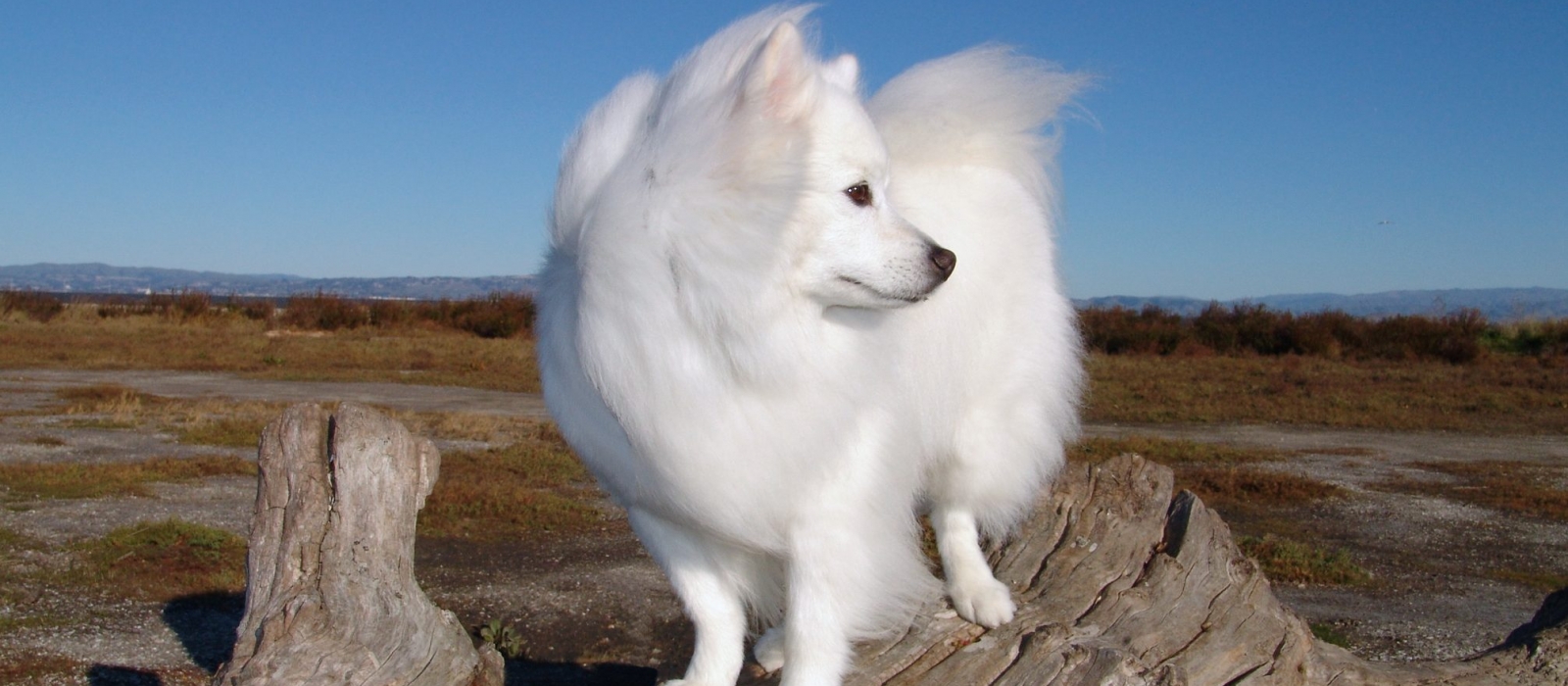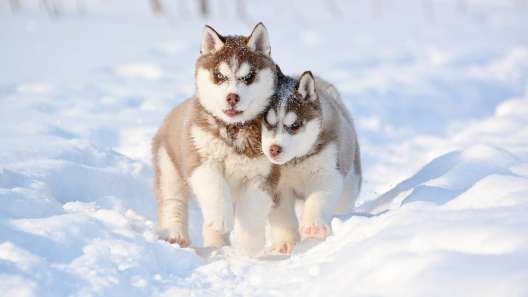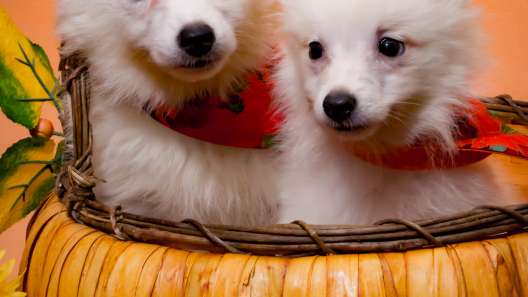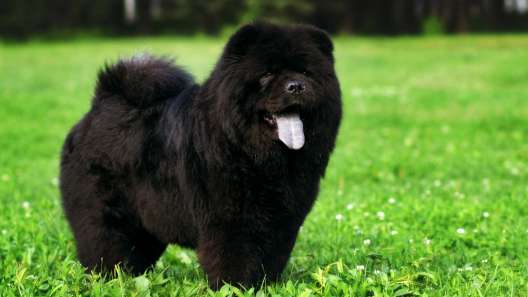-
Activity Level:
high
-
Shedding Level:
moderate
-
Grooming Level:
moderate
-
Trainability:
high
-
Good for Novice Owners:
high
-
Adaptability:
high
-
Kid/Pet Friendly:
often
-
Prey Drive:
moderate
-
Watchdog:
very alert
- Average Size: Small
- Average Lifespan: 12-15 years
- Registered?: aca, akc
American Eskimo Dog Breed Information
Overview
Temperament
Adaptability
Health
Owner Experience
Grooming
Activity Level
Size
Life Span
Did You Know?
The American Eskimo Dog, also sometimes referred to as an Eskie, is a Spitz-type dog breed that originated in Germany. They were originally bred to be watchdogs and farm dogs meant to guard people and property. As these dogs spread across Northern Europe, they were developed into the various lines of German Spitz dog breeds. As Europeans immigrated to the United States in the early 1800s and onwards, they brought their dogs with them. The dog breed we know now as the American Eskimo descended from these dogs.
One of the facts about American Eskimo Dogs is that they were Americanized around World War I. Due to a rise in anti-German sentiment at this time, dog owners in the United States began referring to their dogs as American Spitz instead of German Spitz and the breed continued to develop in the United States. In 1919, the breed was officially recognized as the American Eskimo by the American United Kennel Club (UKC). The American Kennel Club recognized the American Eskimo Dog as part of the Non-Sporting Group in 1994.
American Eskimos are generally fun-loving and affectionate dogs that make great companions. They tend to be highly intelligent, inquisitive, and curious with an independent streak and a lot of energy. Well-socialized, they also tend to be excellent with children, which makes them a great fit for families.
Eskies tend to be alert and friendly dogs, but sometimes can be a little shy or aloof when making new friends. Provided they are well-socialized, they tend to open up and warm up quickly to newcomers once they’ve been introduced.
Due to their watchdog background, Eskies can be territorial by nature. They do not tend to be aggressive unless they are poorly socialized or untrained, but they can be vocal and tend to bark to alert you of any stranger that comes onto the property. Early and ongoing training and socialization can help tone down the barking or help stop it on command.
An American Eskimo is a moderately adaptable dog breed. Although they are small, they are quite energetic dogs that require plenty of exercise and are easily bored. They tend to do best in homes with securely fenced-in yards where they can run. However, they can adapt well to apartment living provided they get enough daily exercise and attention.
This dog’s dense double coat allows them to adapt to a variety of climates. They are definitely an indoor dog, but as a snow dog breed, they can certainly handle playing outside in the snow with you. In fact, you may have a hard time getting them to come back inside when there is snow for them to play in.
As with any dog breed, they are sensitive to heat. You will need to keep them cool and watch them carefully for signs of heatstroke in the summer. American Eskimos are also people-oriented and love being near their favorite humans. This means they do not do well with long periods of time alone.
Potential health conditions to be aware of in American Eskimo Dogs can include progressive retinal atrophy and hip dysplasia. Good breeding practices and the health of the parents make a big difference in the health of American Eskimo puppies.
Reputable breeders will screen their dogs to avoid passing preventable issues to puppies. Make sure you ask about the health and genetic history of both parents. You can also ask about health tests or clearances that have been done. The national breed club recommends an ophthalmologist evaluation, a hip evaluation, and a progressive retinal atrophy DNA test (PRA-prcd, PRCD) at a minimum.
The American Eskimo is a highly trainable dog breed. Their high intelligence and eagerness to please their owners make them a good fit for owners of any experience level, including first-time dog owners. Eskies tend to pick up things quickly, but they can be rather mischievous when their independent or stubborn streak pops up.
First-time dog owners may want to enroll in puppy training classes or enlist the help of a trainer to ensure they have the knowledge and techniques to successfully navigate potential stubborn streaks, effectively handle sudden bursts of energy, and make their dog feel like an active part of family life. There are also other benefits of puppy training classes, like socialization, so they tend to be a good idea even if you don’t necessarily need them for help with training.
Eskies have a double coat and are one of the fluffiest dog breeds. The undercoat is dense and the topcoat grows through it to be longer and become the outer coat. Common coat colors are white or cream. The American Eskimo will shed moderately year-round with heavier shedding sessions twice a year as the seasons change.
In general, brushing this dog’s coat twice a week is enough to remove loose fur, clear our tangles, and prevent mats from forming. During the heavier shedding cycles, you’ll want to brush your Eskie more frequently to help keep them more comfortable and to better contain the loose fur. After all, if most of the fur is contained in your dog grooming brushes, it won’t end up all over your house as much.
The American Eskimo’s coat does not tend to trap dirt, so regular brushing usually takes care of keeping their coat clean. The occasional bath every few months is usually enough to keep this dog’s coat clean. Bathing more often than that can lead to dry and irritated skin. You will also want to cut your dog’s nails regularly, check their ears weekly, carefully clean your dog’s ears as needed, and take care of your dog’s teeth.
Nail trimming once or twice monthly is usually sufficient. If you hear your dog’s nails clicking on the floor in between nail trims, you may need to do it more often. Making sure your dog’s ears are dry, clean, and free of debris helps to prevent ear infections.
Making sure you are brushing their teeth or using an enzyme toothpaste every day, and getting their teeth cleaned at the vet when needed, is ideal dental care for dogs. This helps prevent the tartar buildup that leads to gum disease and tooth decay later in life. You can also supplement your dental care efforts with vet-approved dental hygiene chews and treats, and even a specially-formulated dental care diet.
This dog breed has a high activity level. They have a lot of energy and also get bored easily, so they require some extra activity in addition to their daily walks. Although they are athletic, they are also small, so a lot of intense activity is likely to tire them out. Even though they can get tired out by intense activity, they love to play and are a great fit for certain types of popular dog sports as this also gives them a job to do.
American Eskimos can commonly be found competing in obedience and agility trials. Although Eskies do tend to mellow out as they age, it’s important that they get enough exercise. They can quickly become destructive and distressed if they are undertrained, underexercised, or left alone for too long.
A fully-grown Standard American Eskimo usually stands 15-19 inches tall at the shoulder and weighs 25-35 pounds. If they are 12-15 inches tall, they are considered a Miniature American Eskimo and generally weigh 10-20 pounds.
If they are 9-12 inches tall, they are considered a Toy American Eskimo and generally weigh 6-10 pounds. Looking at the size of the parents, especially the dam, can give you a good idea of what size to expect.
American Eskimo Dogs generally live for 12-15 years on average.
The American Eskimo was a popular choice to perform with clowns for circuses traveling in the United States during the late 19th century, which contributed to their rise in popularity as a family pet. An American Eskimo named Stout’s Pal Pierre performing with the Barnum and Bailey Circus in the 1930s was the first dog to walk across a tightrope!








